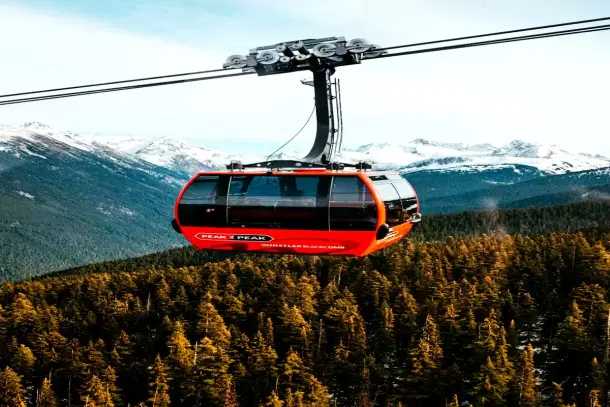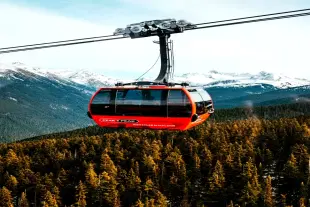Infrastructure
Shimla: World's Second-Largest Ropeway's Construction Set To Start In March 2025,To Decongest City
V Bhagya Subhashini
Aug 01, 2024, 02:49 PM | Updated 03:21 PM IST
Save & read from anywhere!
Bookmark stories for easy access on any device or the Swarajya app.


The Shimla Ropeway Project is set to become the world's second-largest ropeway, and will commence construction on 1 March 2025, announced Himachal Pradesh Deputy Chief Minister Mukesh Agnihotri on Wednesday (30 August).
This ambitious project aims to decongest the Himachal Pradesh state capital, Shimla. The 13.55 km ropeway will feature three route lines named Monal Line, Deodar Line, and Apple Line, with 15 stations along the way.
Currently, the world's longest ropeway is a 32-km project in Bolivia. Globally, there are approximately 25,000 ropeways, while India has only 20.
Himachal Pradesh is leading in this, with the Baglamukhi Temple ropeway already operational and the Baba Balaknath Temple ropeway recently approved by the cabinet.
The Shimla Ropeway will have 13 boarding stations, including Taradevi, Judicial Complex, Chakkar, Tutikandi, New ISBT, Railway Station, Old ISBT, Lift, Chhota Shimla, Navbahar, Sanjauli, IGMC, Lakkar Bazaar, and 103 Tunnel. The project is expected to provide direct employment to 250 people and indirect employment to over 20,000 individuals.
Chief Parliamentary Secretary Sunder Singh Thakur highlighted the project's potential to ease congestion in Shimla, while Principal Secretary (Transport) R D Nazim noted that the project would be financed through an 80 per cent loan from the New Development Bank, with the remaining 20 per cent funded by the state government.
A fact-finding mission from the New Development Bank (NDB) inspected the project from 2 June to 10 June and gave its consent on 12 July. Formal approval is expected during the bank's Board of Directors meeting in December 2024, reports Times Of India.
During a symposium on the New Urban Transport system, Agnihotri, who also holds the transport and highways portfolio, announced that the fare for the ropeway would differ for locals and tourists, with rates set by the state government.
The ropeway will cover a 60 km area, with the state government bearing 20 per cent of the Rs 1,734.40 crore project cost. Initially, it will transport 2,000 people per hour, with a projected increase to 6,000 for two-way travel by 2059.
The entire project is slated for completion in five years, with the first phase targeted within two and a half years.
Known as the 'Queen of Hill Stations,' Shimla has become a multifunctional city along with the dominance of tourism, administrative and institutional activities. As a result of the increased urbanisation in and around hill cities, Shimla is currently experiencing issues with traffic.
Shimla, the capital city of Himachal Pradesh, has a population of about 3.08 lakh with an annual tourist influx of around 40 lakhs.
During the peak tourist season, the city witnesses over 10,000 vehicles, while its infrastructure caters to only 2,500 vehicles.
The innovative ropeway project would be a game changer with tourists parking their vehicles at the entry point of Shimla and boarding the ropeway network. This eco-friendly mode of transportation will be a carbon-neutral project.
V Bhagya Subhashini is a staff writer at Swarajya. She tracks infrastructure developments.





